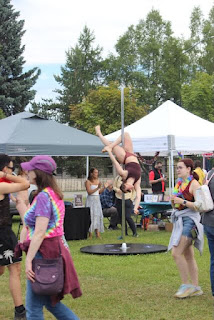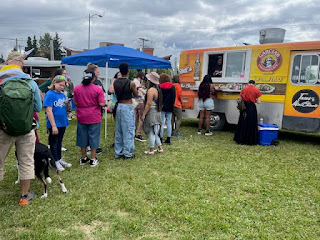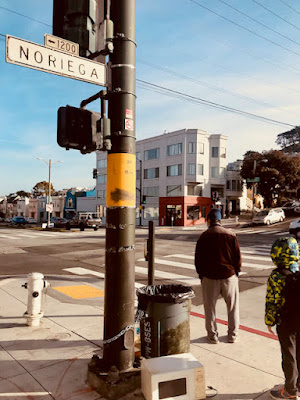[Introduction: As I watch people posting charts and citing statistics to make various cases online, I also realize that only 37+ percent of adult USians* have four year college degrees. That means that many, if not most, only have the sketchiest grasp of how to read graphs, or even to understand basic ideas like percentages. The same is true of a lot of words - they are not in many people's vocabulary and they have a vague or even wrong understanding of many words. Of course that's not true of my readers :), but sometimes I feel the need to get more basic in my explanations just in case someone wants to use something I write to expand a friend or relative's understanding about a topic.]
I've been thinking about a post like this for a while. A post somewhere this morning saying it was Transgender Awareness Week, seems to have pushed me to write this today. Though there's probably enough reminders today and I'd be better off putting this up another time. But, here are my thoughts on this. I'm trying to give people as many links as possible to expand their knowledge on this topic.
The current administration makes a habit of demonizing groups of people its base has little or no actual contact with. They made up stories about Haitian immigrants who were eating cats and dogs in Springfield, Ohio. (A subheading of that Psychology Today story says the immigrants were 'mistakenly' accused. There was no 'mistakenly.' The campaign saw an inflammatory story and ran with it, intentionally adding another log into their firestorm of hatred.)
The campaign constantly talked about immigrants who were criminals, drug dealers, murderers, and rapists. Those who didn't know it was all flagrant falsehoods to stir them up to vote for their criminal rapist candidate, are now shocked when ICE comes after the immigrants who look after their children, grow their food, clean their cars, build their houses, and even are their relatives, their spouses.
They also attacked non-Christians, especially Muslims, even though their presidential candidate was chummy with the Middle Eastern prince who chopped up an American journalist. Again, there was no danger to USians from non-Christians that was greater than the danger from Christians themselves. It was just another fictional class of villains to scare voters. And there are campaigns against "anti-Christian bias" which seems to mean any criticism of Christian values enacted into law to govern the behavior of non-Christians in this predominantly Christian nation.
Among the relatively unknown minorities in the US are transgender folks. By 'unknown' I mean few people actually know someone who is transgender. And the campaign made transgender folks a major campaign target. This is my focus today.
Targeting transgender folks gains traction for several reasons:
1. The idea of a clear cut dichotomy between male and female just seems so natural. We ask whether new babies are girls or boys. The difference between a vagina and a penis is pretty convincing.
The idea of the world being flat makes perfect sense for someone living on what appears to be and feels like flat ground. But from different perspectives, with greater information, it eventually becomes clear that the earth - like the round moon in the sky - is a sphere.
And with greater context and from different perspectives, it's also clear that the dichotomy of male or female is also a gross simplification.
Some societies have long recognized there were people who didn't fit into that either/or category. See:
PBS - A Map of Gender Diverse Cultures
Anthropology Review - Non-Binary Gender Identities in Different Cultures
2. Most people have little or no personal contact with a transgender person. A PewResearch study says 42% of US population say the know someone who is transgender, with the percent higher among the youngest. But it doesn't clarify what exactly 'know' means. Have they spoken to the person? About transgender issues? Have they had them over for dinner? We don't know. Our schools do little or nothing to help students understand anything about trans people, and Evangelical congregations do their best to demonize them.
- About 10% of the population are left-handed.
- About 2 million men per year beat their partners, according to the F.B.I. (That's not a percentage, but that's more than all the transgender people in the US. according to the study below, though others offer a higher number.)
- Approximately 1.5 million people attempted suicide in 2023. 49,000 successfully.
- 804,926 Americans were arrested for suspected DUI in 2024, representing 11% of all arrests nationwide. 12,429 people were killed by drunk drivers.
- New data on violence against transgender people in the U.S. shows there have been at least 399 cases of fatal violence against trans people since 2013, including 27 murders in the past year alone, with no indication the trend is slowing.
- 86% of people don't fact check news on social media and here's a related study showing people are not that good at spotting fake news, and it differs for Democrats and Republicans
- 10% of US population believe the earth is flat. Another 9% aren't sure
I was just trying to find some numbers to put the number of transgender people into context. Raw numbers without context, without other numbers, don't mean that much to most people. You can look up other numbers that might be more relevant.
Bur my basic point is that transgender people are simply not a major danger to anyone compared to other things we ought to be spending time and money on.
3. People don't know that much about the science of gender, even people who support transgender rights. This is hard to prove, but this study by PewResearch seems to support it:
"When asked what has influenced their views on gender identity – specifically, whether they believe a person can be a different gender than the sex they were assigned at birth – those who believe gender can be different from sex at birth and those who do not point to different factors. For the former group, the most influential factors shaping their views are what they’ve learned from science (40%) say this has influenced their views a great deal or a fair amount) and knowing someone who is transgender (38%). Some 46% of those who say gender is determined by sex at birth also point to what they’ve learned from science, but this group is far more likely than those who say a person’s gender can be different from their sex at birth to say their religious beliefs have had at least a fair amount of influence on their opinion (41% vs. 9%)." .
If 40% rely on science, that means 60% do not. And exactly what science are the 'gender is determined by sex at birth' crowd reading?
 |
| This map is interactive online |
From World Population Data where this map is interactive. While it gives percentages for each state, it doesn't give percentage for the United States as a whole. It does give a US total of 1,337,200 transgender people in the US but no percentage. Further, that number is probably low because it is hard to identify transgender people - particularly those who haven't publicly identified themselves as transgender. Using a US population figure of 347,999,881 from Worldometer, I get a total percentage of .0038 for the United States. I'll use that as a rough estimate, given the total population is more recent than the study itself. A further complication is that the number I used is of people 18 and older. The site says that younger people identify as transgender at a higher percent of the population than older transgender folks. In any case, the number of transgender people is quite small.
What do we learn from this map?
1. Less than one percent of USians* identify as transgender. That means for a group of 100 randomly selected people, there maybe one or no people who identify as transgender. The Alaska number was .7% of the Alaska population. That means out of 100 people .7 identify as transgender. But, of course, we know, we don't have any .7 people walking around. If we double the sample size from 100 to 200, then we'd double the number of people from .7 to 1.4. Again, there are no .4 people walking around. So let's go up to 300. That would yield 2.1 people. So, essentially 2 people for every 300 people.
That means most people don't know, or aren't aware they know, a transgender person. And if they do, most of the 300 people have never had a heart to heart talk with that person to gain an understanding of what being transgender means to that person, how the person figured out they were transgender, or anything else other than the fact that the person is transgender.
One can also learn about transgender people through other sources: books, movies, media. There are a number of books written about transgender people - fiction, biography, science.
OVERCOMING IGNORANCE
Mayo Clinic: Transgender Facts - basically a list of definitions
The above two are basically sciency definitions. The next one is similar, but adds a bit of human experience into it.
Advocates for Trans Equality - Trans 101
The ones below offer books by trans folks themselves.
19thNews - 21 books bringing transgender visibility to book lovers
GLAAD - Eight Books from Trans Authors to Read for Trans Awareness Week
*USians is a term some people use instead of Americans as a way of recognizing that all people who live in the Western Hemisphere - from Canada to Argentina - are Americans, not just people in the United States.













































